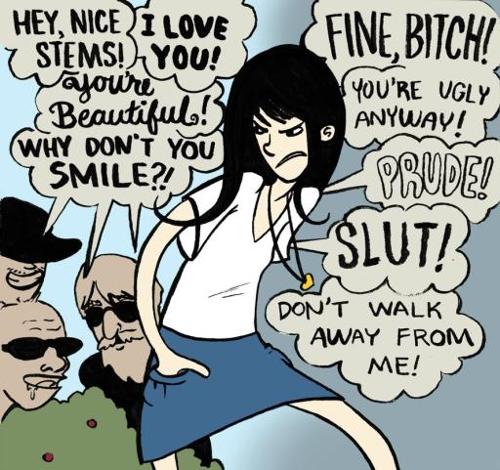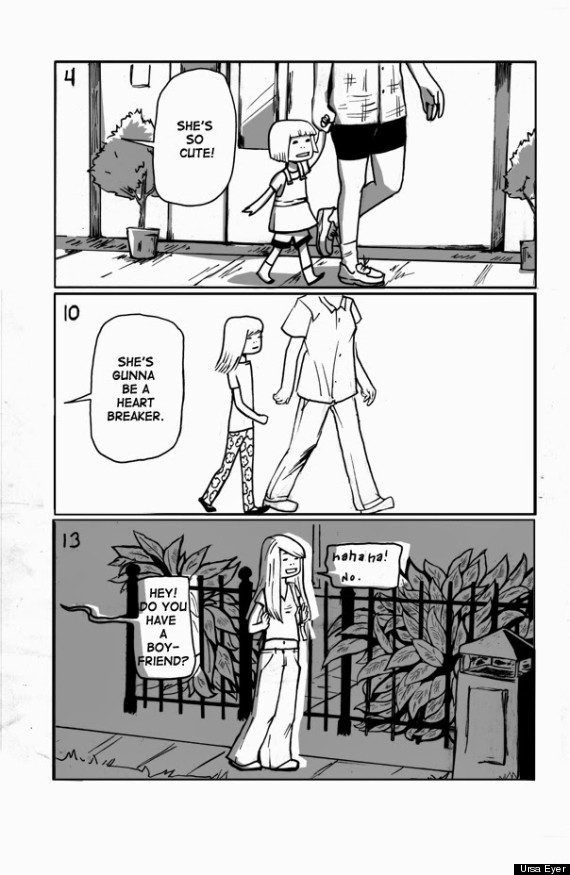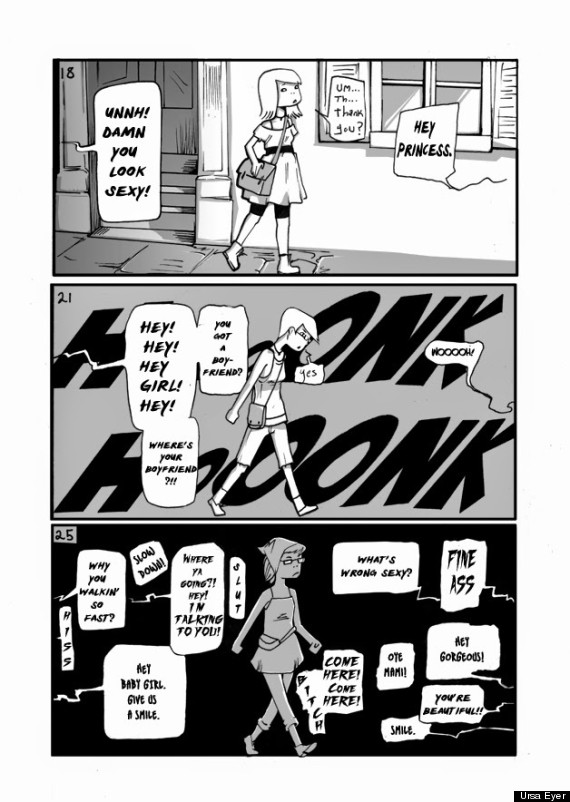Street harassment, or
as it’s more popularly known, “cat calling” is an obstacle many women face on a
daily basis. Oxford Dictionary defines the term as “A loud whistle or a comment of a sexual nature made by a man to a passing woman.” Catcalls come in the
forms of words, whistles, car honks, and any other gesture that could be
considered sexually offensive to women. These gestures and comments are often
made by men as they stand on sidewalks or drive by in cars. Catcalling is a
form of harassment that is very common, yet often ignored.
While it is often
looked over, catcalling is most definitely a serious issue. The Harvard Crimson
writer Lily K. Calcagnini makes many compelling arguments against catcalling in
her article “Comments Unwelcome: The Insidious Problem of Catcalling.” Calcagnini
focuses on the fact that a catcall is not
a compliment. She states that a catcaller’s words would be appreciated when
being given by a loved one, but not by a complete stranger with rather indecent
intentions. She writes, “…a catcall is vapid. It reduces my worth to that of my appearance. In the public context of the street, coming from the mouth of a stranger, a catcall exploits the verbiage of intimacy and makes me feel both objectified and powerless to rebuke my objectification.”
Just as Calcagnini states, the issue of catcalling reinforces the idea
that women are worth nothing more than their physical appearance. Men who
catcall point out a woman’s features, hoping for some sort of sexual favor in
return. They seek women with low self-esteem, hoping to find someone desperate
enough to fulfill their wishes. Catcalling also dehumanizes women, making them
appear to be only useful for sexual needs. A Dublin woman, Jenny Stanley, wrote
about her experience of being catcalled to the Irish Times. A group of men had harassed her while walking home
from work late at night. She heard a man talk about her to one of the other
men, saying “’I fancy that one,’” as if she were nothing but a car in a
dealership, rather than a human being. Stanley thinks about this comment,
writing, “If I can be seen in this way, I must not be perceived as an equal member of society by these people.” She also questions her own lack of response
to these men, asking herself, “’Why don't we say something back? Why don't we tell them that we deserve more than to be objectified in this way? Why don't we explain why we respond to their compliments of how attractive we are with a stare of distaste rather than the gratitude they so clearly feel entitled to?’"
New Orleans artist Ursa
Eyer has created a string of comics that illustrate the nature of the catcall
from the very beginning of a woman’s life. One of her comics portrays a young
version of herself, each frame displaying a different age, and the comments she
received. From looking at the comic, one can see that as she grows older, the
comments become more suggestive, vulgar, and common. Eyer told the Huffington
Post about her experiences, saying “We deal with it so often that it just becomes a part of our daily lives. We don’t even mention it, because it’s the norm.”
While the majority of
people see catcalling as an issue, there are a few who think it’s perfectly
fine. New York Post writer Doree
Lewak wrote an article titled, “Hey, ladies- catcalls are flattering! Deal with it.” She describes her experiences of being catcalled, writing, “I can be that objectified sex thing for [men]!” Lewak sees catcalling as being a boost to her self-esteem, saying
that “…my ego and I can’t fit through the door!” She claims the complete
opposite of most people, saying that these crude comments are in fact
compliments, and that women should feel empowered, rather than offended by
them.
QUESTIONS
1.
Do you see catcalling as being an issue
in today’s society?
2.
Have you witnessed or experienced
catcalling? If so, how did it affect you?
3.
People often claim that catcalling is
brought on by the female, because of the way she dresses or acts. Do you think
this is the case? Why or why not?




No comments:
Post a Comment